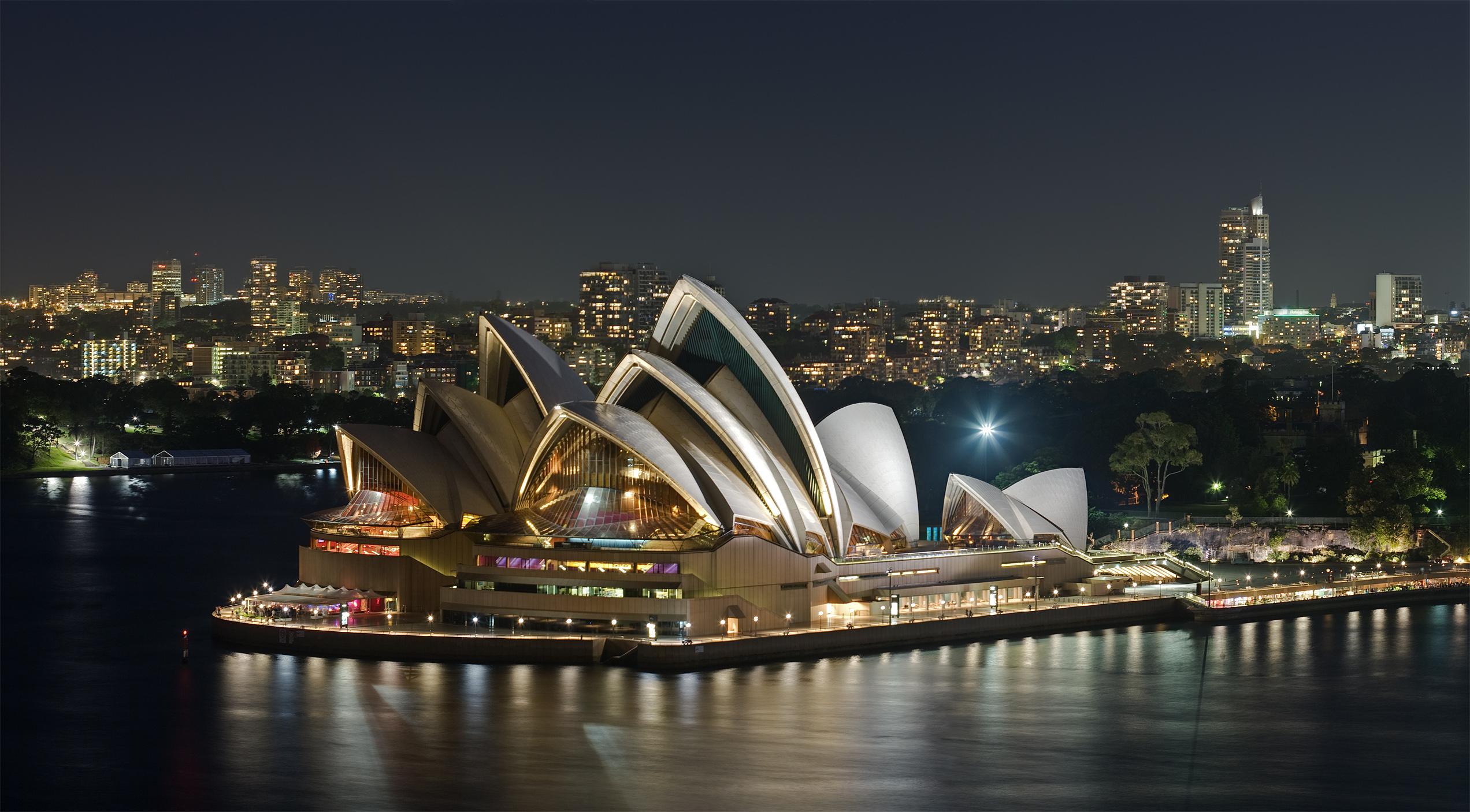

A traveller's guide to Sydney, Australia
Sydney is a cosmopolitan city, surrounded by vast unspoilt beaches, sparkling harbours, famous landmarks, renowned vineyards and numerous world heritage sites. It is the capital of New South Wales and one of Australia’s largest cities, where millions of travellers – both gap year students and vacationers alike - flock to each year. Sydney enjoys a sunny climate with warm summers and mild winters, so there are many outdoor activities to enjoy all year round.
Arguably the most famous visitor attraction in Sydney is the iconic Sydney Opera House, famous for its white-shelled roof – both a feat of engineering (with its complex roof-support system) and an architectural delight. Spectacular from the outside, and equally special inside, if you have chance to see an event.
Perhaps equally as iconic is the steel-framed Sydney Harbour Bridge, nicknamed ‘The Coathanger’, another grand engineering achievement, built in 1932. Visitors are able to walk or cycle across the bridge to take in the panoramic views of the harbour and Opera House, or, for the more adventurous types, visitors can climb to the summit of the bridge, 134 metres above sea level. There is also the Sydney Tower, which is as tall as the Eiffel Tower and has an outdoor platform, the Skywalk, which offers 360 degree views of the surrounding city and suburbs. The vast Darling Harbour and smaller Circular Quay are hubs of waterside life, with the esteemed Royal Botanic Gardens and Mrs Macquarie’s Chair – a seat carved into a stone cliff – nearby.
During summer (December to February), average temperatures range from 18.6 - 25.8°C, and with average humidity around 65%, it can be very pleasant. Of course, Australia is prone to heatwaves during summer – as experienced this summer. When it gets uncomfortably hot, it is the perfect time to explore one of Sydney’s many beaches, with sea temperatures in the low 20s.
Bondi Beach is perhaps the most famous of Sydney’s beaches, but there are many others including Coogee, Palm, Manly and Bronte, to name a few. Whilst visiting the beaches, many tourists attempt surfing which is, of course, a national pastime.
Naturally, visitors to Sydney should keep an eye on the UV index (describing the radiation intensity) in local weather reports, particularly at this time of year, and always protect skin from sunburn by using SPF30+ sunscreen and wearing appropriate protective clothing.
In autumn (March – May) humidity drops and average temperatures fall between 14-22°C, with crisp, fresh air making autumn the season for enjoying Sydney’s coastal walks, by foot, or trike. There is a two-hour walk from Coogee beach to Bondi, but also shorter walks in Watson’s Bay and from Split to Manly. Take in the breathtaking natural beauty of Sydney Harbour or try to spy humpback whales, which migrate north from May to August.
Sydney’s coolest months are June to August when average temperatures drop between 8-17°C. Sydney’s rainfall is generally highest in winter, especially June, with an average of 132 mm. On a rainy day, there is the Wild Life Sydney Zoo or a wide variety of museums to visit, such as the Art Gallery of New South Wales (modern art), the Museum of Contemporary Art Australia at The Rocks, the Nicholson Museum (antiquities), the Australian National Maritime Museum at Darling Harbour and the Hyde Park Barracks (chronicling colonial life in the city).
Snow in Sydney is extremely rare, except on the Snowy Mountains. The ‘Snowies’ as they are also known, are a 6 hour drive from Sydney and are the highest mountain range on mainland Australia, peaking at Mount Kosciuszko reaching 2,228 metres above sea level. Unusually for Australia, the higher regions of the mountain range have an alpine climate and experience large snowfalls every winter.
Snow can also fall in regional parts of NSW including the Blue Mountains, which is a national park. Over the millennia the ancient sandstone has been weathered into gorges lined by steep cliffs and separated by narrow ridges, a spectacular site complete with waterfalls and forests, perfect for hiking.
In spring (September to November), the days are warmer but the humidity is not as high as summer, with average daily temperatures range from 11 - 23°C. This may be a perfect time to visit The Rocks, the oldest part of Sydney, with narrow lanes, fine colonial buildings and sandstone churches. There are weekend markets, art museums, street entertainment, restaurants and bars, as well as further breathtaking views of the harbour.
Sydney has much to offer in terms of food, with many famous, award-winning and innovative restaurants to choose from, including Quay, Sephia and Apollo.
Of course, for the wine-lovers no visit to Sydney is complete without visiting the Hunter Valley, one of Australia’s premier wine regions and home to world-renowned wines.
With its pleasant climate and incredible variety of attractions and sights, it’s easy to see why people go to Sydney and stay a while.
1999 Sydney hailstorm
The 1999 hailstorm in Sydney was the costliest natural disaster in Australian insurance history, causing extensive damage along the east coast of New South Wales. On 14th April 1999, an erratic supercell storm developed south of Sydney and struck eastern and city suburbs. The intense, long-lived thunderstorm brought lightning, rain and 500,000 tonnes of hailstones – possibly even exceeding 9 cm in diameter, which was the largest measured hailstone – and reportedly caused over AUS$2.3 billion worth of damage, affecting over 20,000 houses, 40,000 vehicles and 25 aircrafts at Sydney Airport.



